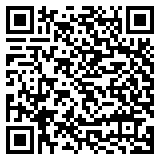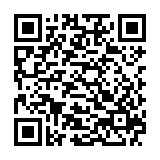Social media has dramatically transformed the way people communicate across the world. Platforms like Instagram, Twitter, TikTok, and YouTube not only help us stay connected but also push the boundaries of how language evolves. From memes to hashtags, social media is a playground for new words and phrases, often influenced by the cultures that use them. These language shifts are fascinating, especially when we look at how slang and vernacular develops and spread across different cultures. Understanding the way language is interpreted online can reveal much about society, identity, and global communication.
What is Slang and Vernacular?
To understand the impact of slang and vernaculars on social media, we first need to define these terms. Slang refers to informal language or expressions that are often used in a casual, playful, or humorous way. It can be a short term or a phrase that has a specific meaning in certain social groups. For example, “lit” means something exciting or impressive, and “ghosting” refers to suddenly cutting off contact with someone without explanation.
Vernacular, on the other hand, refers to the everyday language spoken by people in a specific region or group. It includes regional dialects and informal ways of speaking that are influenced by culture, geography, and social interactions. While slang can be part of vernacular, it’s broader, encompassing all types of informal language that people use in daily life.
On social media, both slang and vernaculars are constantly being reshaped. As people across the globe interact, they share their ways of speaking, which leads to new interpretations and meanings of words.
Why is Slang and Vernacular Important in Social Media?
Speed and Convenience
In the fast-paced world of social media, people want to communicate quickly. Slang makes conversations more efficient by shortening phrases or using symbols, which saves time. For example, “LOL” (laugh out loud) or “BRB” (be right back) are used instead of longer sentences. These shorthand expressions are interpreted instantly by most users, creating a shared language that cuts through the noise of more formal communication.
Cultural Identity and Expression
Language is a powerful way to express identity. Slang and vernacular are not only about communication; they also reflect cultural values, attitudes, and beliefs. On social media, people often use these terms to show where they come from and who they identify with. For instance, someone might use “fam” (family) to refer to their close friends, signaling an informal and close-knit community. These expressions can be tied to specific cultural practices or social norms, which gives outsiders a glimpse into the cultural context.
Because slang is often tied to cultural identity, it also plays a role in how people interpret each other online. Understanding the context behind a word or phrase is crucial to accurately interpreting its meaning.
Slang Around the World: Language Interpretation Across Cultures
Different cultures bring their own unique slang and vernacular to social media. What might be understood in one country can have a completely different meaning in another. Let’s look at how language is interpreted across cultures and how these interpretations can lead to interesting (and sometimes confusing) exchanges.
United States: “Lit” and “Vibe”
In the United States, social media is full of popular slang words like “lit,” “vibe,” and “slay.” Words like these have specific meanings that are often tied to pop culture and youth trends. For example, “lit” might refer to a party or event that is exciting or energetic, while “vibe” could describe the overall feeling or atmosphere of a situation. These terms are often interpreted as positive or upbeat, and they can be used to enhance the emotional tone of a post or comment.
However, interpreting these slang terms can be tricky for those outside of American culture or those unfamiliar with these expressions. “Vibe,” for instance, may simply mean “feeling” in a neutral sense in other languages, but in American slang, it carries a much more expressive, energetic connotation.
United Kingdom: “Peng” and “Bants”
In the United Kingdom, slang often reflects the playful and cheeky nature of British culture. Words like “peng” (meaning attractive) and “bants” (short for banter, meaning playful teasing) are commonly used on social media. These expressions are interpreted by most Brits as lighthearted and fun, but for someone unfamiliar with UK slang, they could come across as confusing or even rude.
For example, when someone in the UK says “You’re peng,” they’re likely giving a compliment. However, the term “bants” can sometimes be misinterpreted if one doesn’t understand the informal, joking nature behind it. What might seem like an insult to someone unfamiliar with the context can actually be a sign of friendly camaraderie among British speakers.
Japan: “Yabai” and “Kawaii”
In Japan, language on social media is deeply influenced by “kawaii” culture (meaning cute or charming), as well as other trends like anime. The word “yabai” is a great example. Originally, “yabai” meant dangerous or risky, but over time, it has evolved into a versatile word that can mean “cool,” “awesome,” or “terrible,” depending on the context. A person might say, “That’s yabai!” to express excitement over something amazing, or to describe a challenging situation. Interpreting “yabai” properly requires understanding the tone and context in which it’s used, as its meaning can change dramatically.
Japanese social media also frequently uses expressions like “w” (for laugh, derived from “warau”), similar to how English speakers use “LOL.” However, these expressions may be confusing to those who don’t know the cultural background of these terms.
Brazil: “Top” and “Rolê”
In Brazil, social media slang is often inspired by the country’s vibrant music scene, including funk and samba. Words like “top” (meaning great or amazing) and “rolê” (a casual hangout or outing) are widely used by young people online. These words are deeply connected to Brazilian culture, which places a strong emphasis on socializing, music, and community.
However, a non-Brazilian social media user might interpret “rolê” literally as “role,” and miss the cultural significance behind it. Understanding these terms requires knowing the social context of Brazilian culture and how language reflects everyday activities and leisure.
How Slang Travels: The Global Spread of Language
One of the fascinating aspects of social media is how quickly slang spreads across borders. Through hashtags, memes, and viral videos, terms that were once limited to a specific country or region can quickly become part of global conversation. However, the way slang is interpreted can change depending on the culture. For example, a term like “YOLO” (You Only Live Once) originated in the U.S., but it has spread worldwide and is understood in different ways depending on the country.
Influencers and celebrities play a major role in introducing new slang. When a well-known figure uses a certain phrase, it can catch on and become widely used, often with different interpretations in various cultures. For example, the word “stan” (to be a devoted fan of someone) became popular after the release of Eminem’s song “Stan,” and today, it’s used by fans across the world, each interpreting it in their own way.
The Challenges of Slang and Vernacular Interpretation
While slang creates fun and creative ways to communicate, it can also lead to misunderstandings. A word that is playful in one culture can sound harsh or offensive in another. Slang also evolves quickly, which means that some words may have different meanings over time or in different contexts. Without understanding the cultural context behind a word, it can be easy to misinterpret the intended message.
Additionally, not everyone is familiar with the latest social media slang, particularly older generations who may not be as immersed in online trends. This can create a communication gap between people who are fluent in digital slang and those who are not.
Wrapping It Up
Social media has transformed the way we interpret and use language across cultures. Slang and vernacular gives us insight into the values and identities of different communities, while also allowing language to evolve and spread quickly. However, interpreting these words and phrases requires an understanding of the cultural context in which they are used. As social media continues to shape global communication, language will continue to adapt and reflect the diversity of people who use it. So next time you encounter a new slang term online, take a moment to think about its meaning—and how it’s interpreted in different corners of the world.





0 Comments